Energy policy and administration
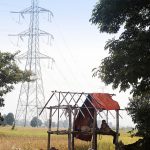
The main laws and policies that govern the electricity supply in Lao PDR are: The Electricity Law 1997, amended in 2012. This governs electricity generation and distribution in Lao PDR. It sets standards for the administration, production, distribution, transmission and imports/exports of electricity.1The Power Sector ...
Adaptation
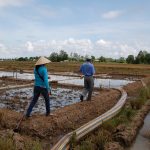
Climate change adaptation is understood as the actions undertaken by communities to cope with actual or predicted impacts of climate change.13 The actions may either reduce the level of harm or maximize the positive outcomes from climate change.14 Adaptaton differs from mitigation, which means taking action ...
Water resources

Water resources in Vietnam are quite diverse, comprising both natural and artificial water bodies. The countries water resources are under increasing pressure from over-exploitation due to increased irrigation demand, urban and industrial development, as well as concentrated areas of increasing population. 29 Ensuring national water security is ...
Forests and Forestry

The Government of Vietnam considers forests an important ecological resource, valuable for the socio-economic development and well-being of communities throughout the country. Forests play a major role in adapting to climate change as well as in regular environmental functions such as preventing erosion and maintaining ...
Agriculture and Fishing
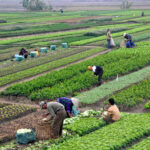
The role of agriculture in VietnamThe agriculture sector plays a crucial role in Vietnam’s economy and society. In Vietnam, the sector includes crop production, livestock, fisheries, and forestry. Vietnam’s tropical climate, fertile soil, abundant water supply and rich biodiversity means that after 40 years of ...
Environment and natural resources policy and administration

The 7th National Consultation Workshop on the Draft of the Environment and Natural Resource Code of the Kingdom of Cambodia. Photo by Open Development Cambodia, taken on 22 March 2018. Licensed under CC BY-SA 4.0.With 76% of its people living in rural areas,235 Cambodia holds ...
Social development
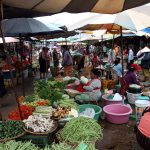
Social development addresses profound social problems, especially poverty, unemployment and social exclusion, and seeks to define poverty across a spectrum of social and structural barriers instead of simply by income levels. Lao PDR has achieved a number of ambitious goals. Poverty levels have halved from ...
Education and training

Chi Phat primary school, Koh Kong Province. Photo by ODC team, taken on 28 November 2017. Licensed under CC BY-SA 4.0.Access to free, good quality education in Cambodia is a right set out in the country’s Constitution: Article 65: “The State shall protect and promote citizens’ ...
Land policy and administration

The Royal Government of Cambodia's land policy has three pillars: land administration, land management and land distribution. The objective of the country’s land policy is to facilitate the use and management of land and natural resources for socio-economic development in an equitable and sustainable manner. ...
Relevant ministries

The Ministry of Environment is the main authority mandated to oversee environmental issues, including protected areas, environmental impact assessments, and management of natural resources. ...
Energy

Cambodia has undergone rapid economic development in recent decades, with GDP per capita tripled between 1999 and 2013. However, mainly due to three decades of war and political turmoil which severely damaged the country’s infrastructure, the country still lacks the means required for energy sector ...
Watersheds
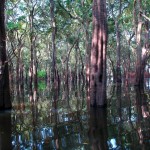
Watersheds are impacted by many factors, through interaction with both natural elements and human activity in the area. The trees and plants in forests not only tap into the water within the soil, but they also affect the quality and composition of the soil itself, ...
Ethnic minorities and indigenous people policy and rights

IntroductionThe Vietnamese Government recognizes 53 ethnic minorities438 Other counts suggest the existence of more than 90 groups, amounting to approximately 10 million people, or nearly 10% of Vietnam’s population.439 Most ethnic minorities inhabit remote areas of Vietnam and have their own belief systems which are ...
Disasters and emergency response
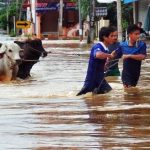
Disasters The five countries of the Lower Mekong make up one of the most disaster-prone regions in the world. Cambodia, Lao PDR, Myanmar, Thailand and Vietnam are frequently affected by natural disasters, primarily floods, tsunamis, storms and drought. Other potential risks include earthquakes, fires, pandemics, landslides, ...
Overview of policy and legal framework

Environmental protection and conservation are given high priority in the Royal Government of Cambodia’s guiding strategy, the Rectangular Strategy Phase III (2014–2018). ...
Water policy and administration

In Cambodia, alternate periods of drought and heavy rains bring challenges for water management. The current trends show increasing annual rainfall and temperature throughout Cambodia, with a likelihood that both flooding and droughts will increase in frequency, severity and duration500. Water management involves issues of ...
Environment and natural resources
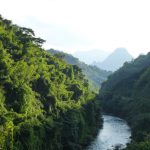
Laos features a diversity of landscapes and ecosystems. The country is landlocked and heavily forested, with 80% of land cover featuring hilly or mountainous terrain, and the remaining 20% comprising plateaus and lowland valleys along the Mekong floodplain.Land and mineral resourcesForest (including primary and potential forests) covers the ...
Agriculture and fishing
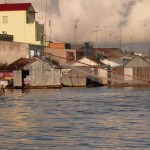
The countries of the Lower Mekong are moving from largely agrarian fishing and farming, to agro-industrial sectors where people farm cash crops rather than those that directly supply their families’ needs. While there are many crops and food products across the region, rice and fish ...
Small and medium enterprises SME

Small and medium enterprises (SME) have long been considered a vital driver to economic growth for developing economies. SMEs stimulate job creation throughout the country. Migration of employment to neighboring countries and the unemployment rate has significantly decreased due to a rising number of SMEs, ...






